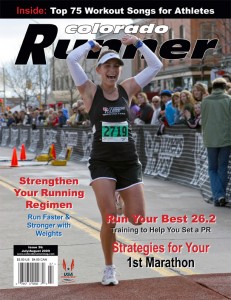Summer is prime trail running season. Before you strap on your shoes and hit the dirt, the American Trail Running Association encourages runners to keep in mind a few guidelines.
- Stay on the trail. Well-marked trails already exist; they are not made on the day you head out for a run.
- Run over obstacles. Running around mud, rocks, or downed tree limbs widens trails, impacts vegetation, and causes further erosion. If a trail is really muddy, don’t run on it.
- Run only on officially designated open trails. Respect trail and road closures and avoid trespassing on private land.
- Respect animals. Don’t disturb wildlife or livestock. Animals scared by your sudden approach may be dangerous. Give them plenty of room. Avoid trails that cross known wildlife havens during sensitive times such as nesting or mating. When passing horses use special care and follow directions from the horseback riders.
- Keep your dog on a leash. Unless otherwise posted, keep your dog on a leash and under control at all times.
- Don’t startle other trail users. Warn others as you approach by saying, “On your left” or “Trail.” Show respect when passing, by slowing down or stopping, if necessary. Be ready to yield to other trail users (bikers, hikers, horses) even if you have the posted right of way. Uphill runners yield to downhill runners in most situations.
- Don’t litter. Pack out at least as much as you pack in. Gel wrappers with their little torn-off tops, and old water bottles don’t have a place on the trail. Consider wearing apparel with pockets that zip or a hydration pack.
- Run in small groups. Split larger groups into smaller groups. Larger groups can be very intimidating to hikers and have a greater environmental impact on trails.
- Be safe. Let at least one other person know where you are planning to run and when you expect to return. Take a map with you in unfamiliar areas. Be prepared for the weather and plan for the worst. Carry plenty of water, electrolyte replacement drink, or snacks for longer runs. ATRA does not advise the use of headphones or iPods. The wearer typically can’t hear what is going on around them, including wildlife and other trail users.
- Leave what you find. Leave natural or historic objects as you find them, this includes wildflowers and native grasses. Removing or collecting trail markers is serious vandalism that puts others at risk.
Related Posts
Happy trails!
Derek


